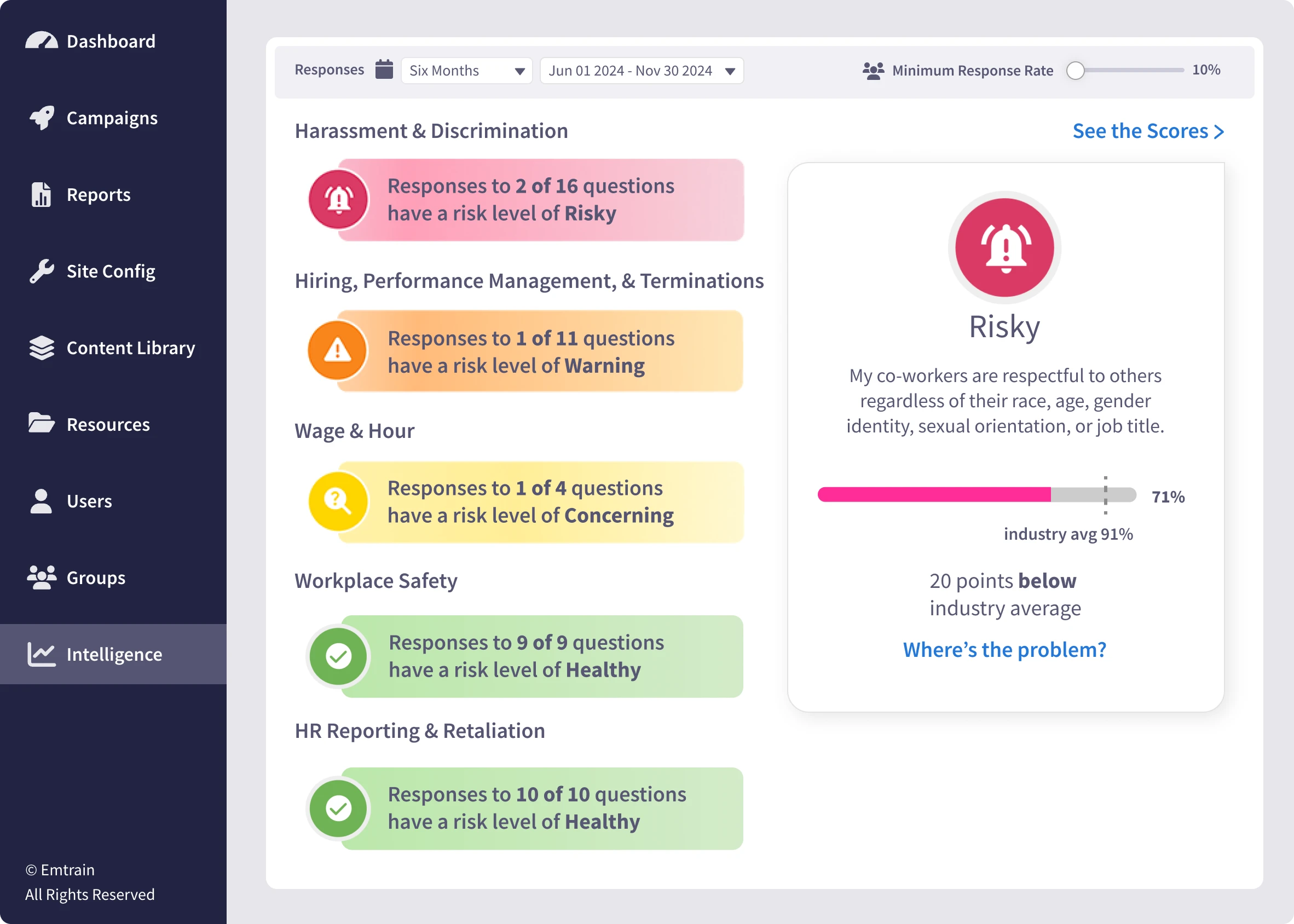Home » Concepts » Discrimination & Harassment » Hostile work environment
A hostile work environment exists when behavior becomes severe or pervasive enough to make a reasonable employee feel intimidated, abused, or unable to perform their job effectively. This conduct may include harassment, bullying, discrimination, or repeated unwelcome comments and actions that negatively impact the workplace. Legally, the behavior often must relate to a protected characteristic (such as race, gender, or age) under laws such as Title VII of the Civil Rights Act. Creating a respectful workplace requires proactive leadership, clear standards, and consistent behavioral expectations.
Emtrain’s harassment training course is engaging, interactive, and designed to spot and reduce EEO risk.

A hostile work environment occurs when unwelcome behavior or communication creates an intimidating, offensive, or abusive atmosphere that interferes with an employee’s ability to work. This concept is central to understanding modern workplace risk, particularly for HR Managers, Compliance Officers, and People Leaders who are responsible for protecting both the organization and its people. A strong understanding of this issue supports legal compliance, culture health, and early risk detection.
Emtrain addresses these challenges through courses like our Preventing Workplace Harassment Training and our Respect Courses, which help employees identify, prevent, and report toxic behaviors before they escalate. We also encourage leaders to learn from insights shared in our blog, Hostile Work Environments: How Organizations Can Recognize and Prevent Risk, which dives deeply into root causes and organizational solutions.
The legal framework for hostile work environments began developing with landmark cases like Meritor Savings Bank v. Vinson (1986), which established that sexual harassment creating a hostile environment violates Title VII. Over time, courts and agencies like the U.S. Equal Employment Opportunity Commission (EEOC) expanded guidance on harassment, discrimination, and employer responsibility. Today’s workplaces face heightened scrutiny as societal expectations for psychological safety and respectful culture increase. This evolution matters because employees now expect transparency, accountability, and swift organizational action. For employers, failing to address hostile work environments increases the risk of lawsuits, turnover, and reputational damage.
Real workplace examples help illustrate what hostile behavior looks like:
For more detailed examples, Emtrain explores early warning signs in our post What is a Hostile Work Environment?
External Resource References:
A hostile work environment isn’t just a compliance issue—it’s a human issue. When employees feel unsafe, disrespected, or ignored, the entire organization suffers. HR, Compliance, and People Leaders play a crucial role in shaping a culture where respectful interactions are the norm, not the exception. Emtrain provides the tools, training, and insights to move organizations beyond compliance and into proactive culture health.
In this scenario-based preview, two employees welcome a new hire and casually describe the “work culture”—revealing inappropriate norms that signal a potentially hostile work environment. As they brag about working late, drinking afterward, and “hitting on the girl engineers,” the tone shifts when one employee asks a woman engineer if she’s working late. She responds with clear discomfort, saying, “Mind your business,” and shakes her head in disgust. These subtle and overt behaviors demonstrate how toxic dynamics form, how norms get reinforced, and how harm impacts those on the receiving end.